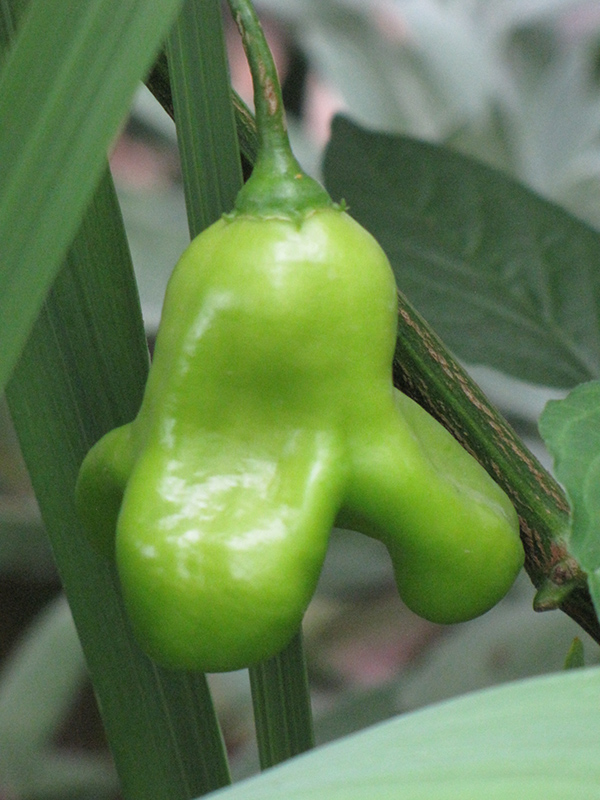Height: 4 feet
Spacing: 24 inches
Sunlight:
![]()
Hardiness Zone: (annual)
Other Names: Christmas Bell, Joker's Hat
Group/Class: Hot
Description:
A stunning variety, known for its uniquely shaped fruit; perfect for patio containers and gardens; fruit emerges green and finally matures to red; well balanced flavor, from heat to sweet, is great for pickling, hot sauces, drying and salsas
Edible Qualities
Bishops Crown Pepper is an annual vegetable plant that is commonly grown for its edible qualities, although it does have ornamental merits as well. It produces small green peppers (which are technically 'berries') which are typically harvested when mature. The fruit will often fade to red over time. The peppers have a spicy taste and a crisp texture.
The peppers are most often used in the following ways:
- Fresh Eating
- Cooking
- Drying
- Seasoning
- Sauces
Planting & Growing
Bishops Crown Pepper will grow to be about 4 feet tall at maturity, with a spread of 24 inches. When planted in rows, individual plants should be spaced approximately 24 inches apart. Because of its vigorous growth habit, it may require staking or supplemental support. This vegetable plant is an annual, which means that it will grow for one season in your garden and then die after producing a crop.
This plant can be integrated into a landscape or flower garden by creative gardeners, but is usually grown in a designated vegetable garden. It should only be grown in full sunlight. It does best in average to evenly moist conditions, but will not tolerate standing water. It is not particular as to soil pH, but grows best in rich soils. It is somewhat tolerant of urban pollution. This species is not originally from North America.
Bishops Crown Pepper is a good choice for the vegetable garden, but it is also well-suited for use in outdoor pots and containers. With its upright habit of growth, it is best suited for use as a 'thriller' in the 'spiller-thriller-filler' container combination; plant it near the center of the pot, surrounded by smaller plants and those that spill over the edges. It is even sizeable enough that it can be grown alone in a suitable container. Note that when growing plants in outdoor containers and baskets, they may require more frequent waterings than they would in the yard or garden.

